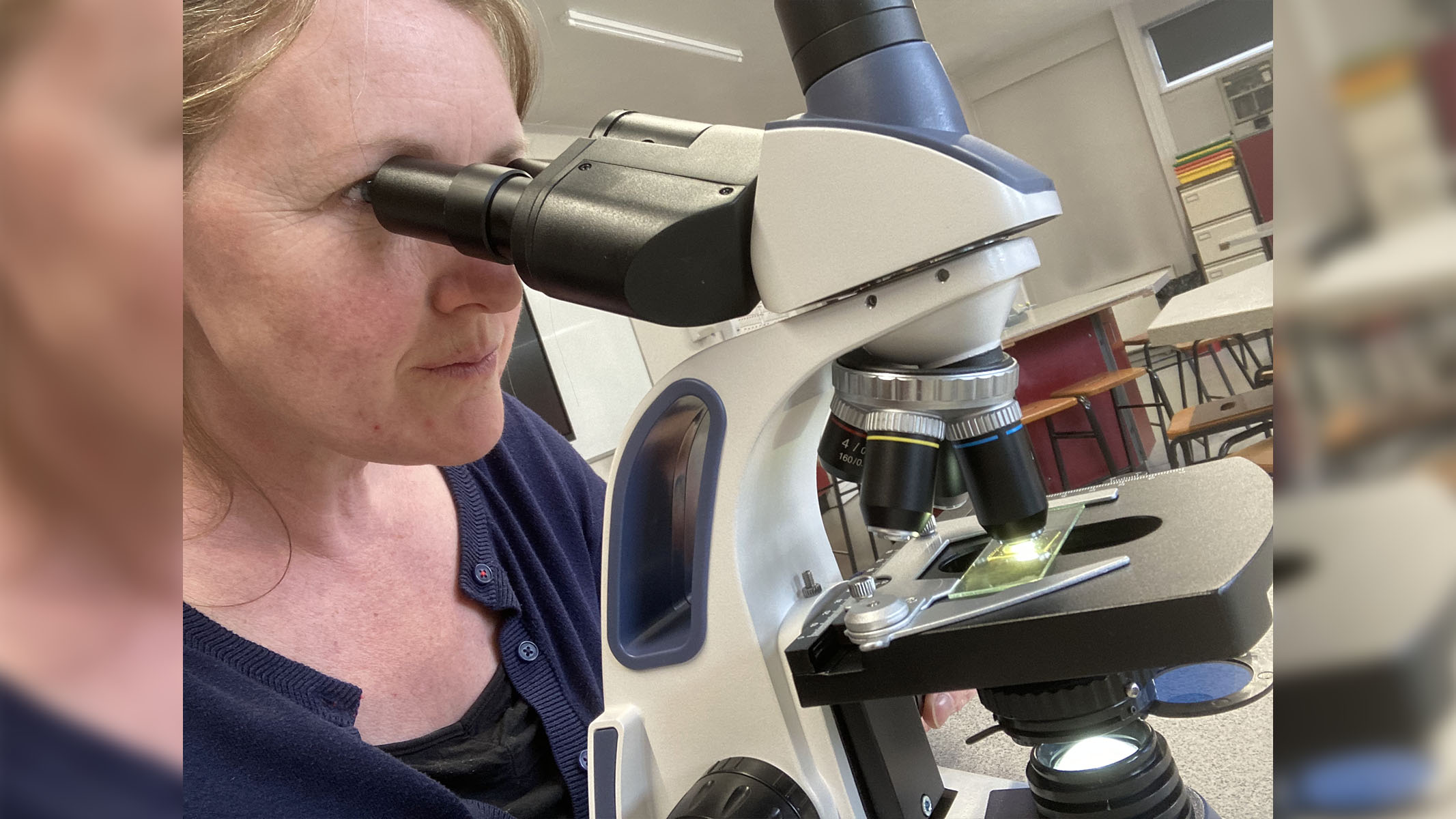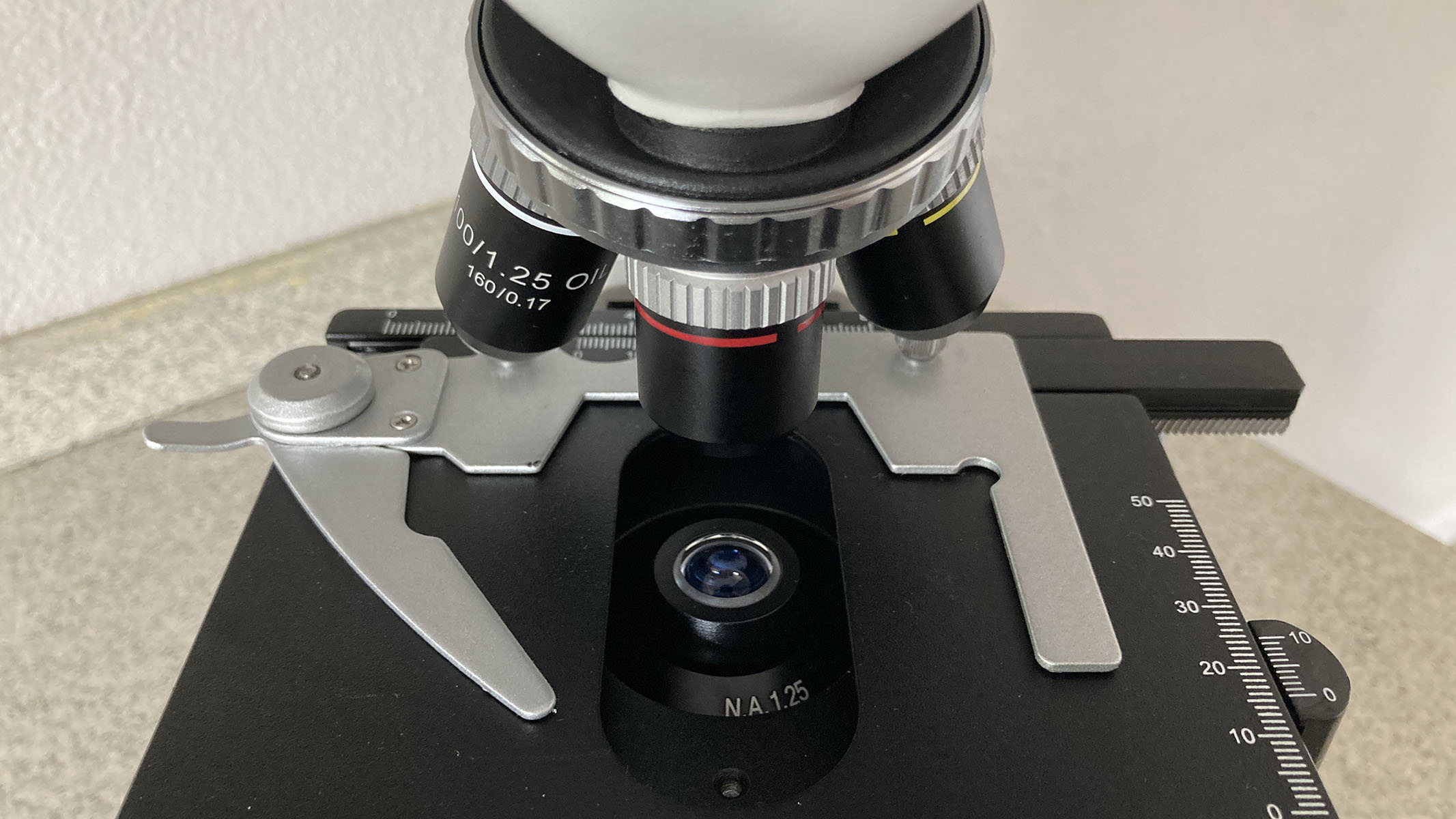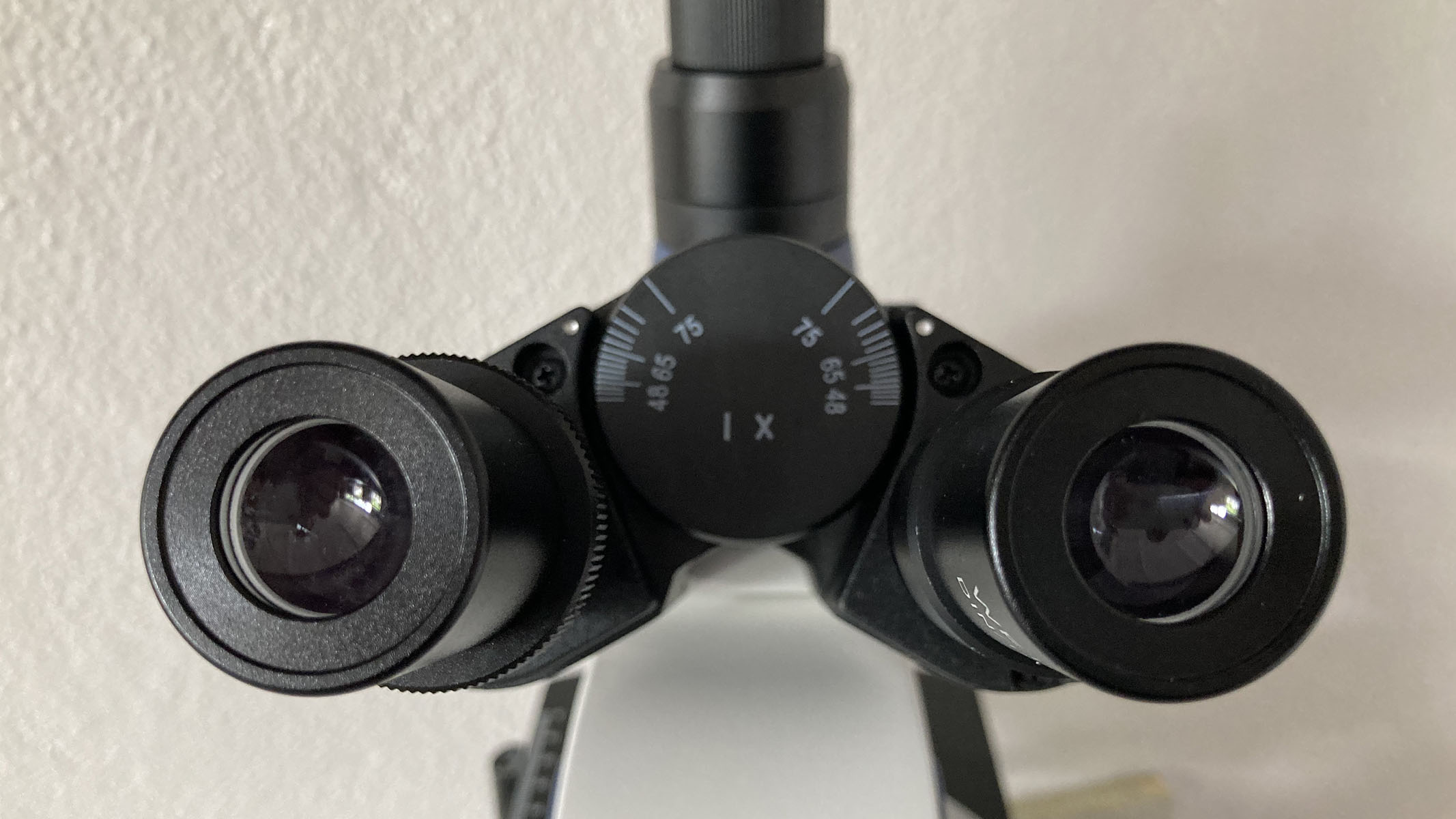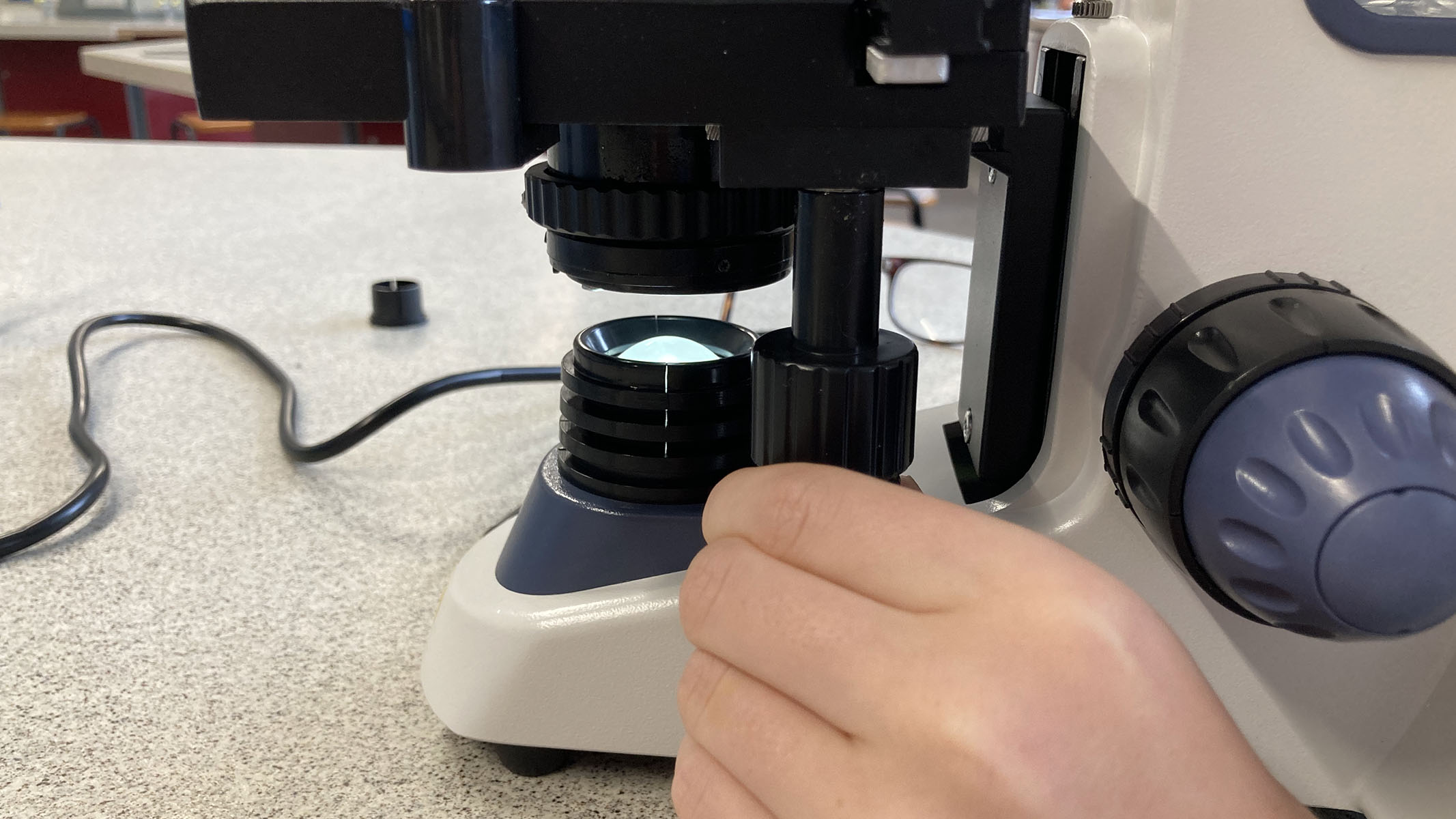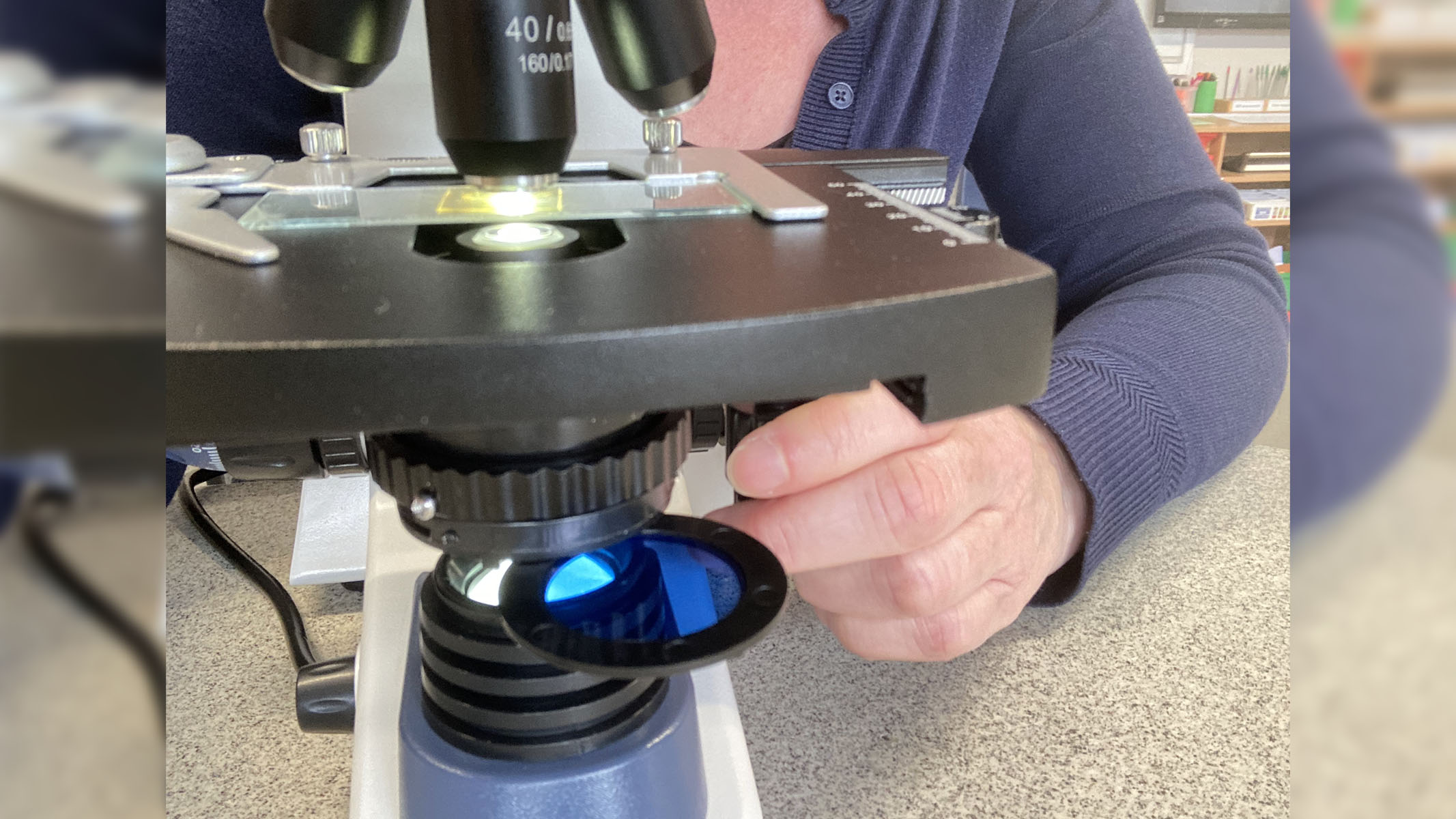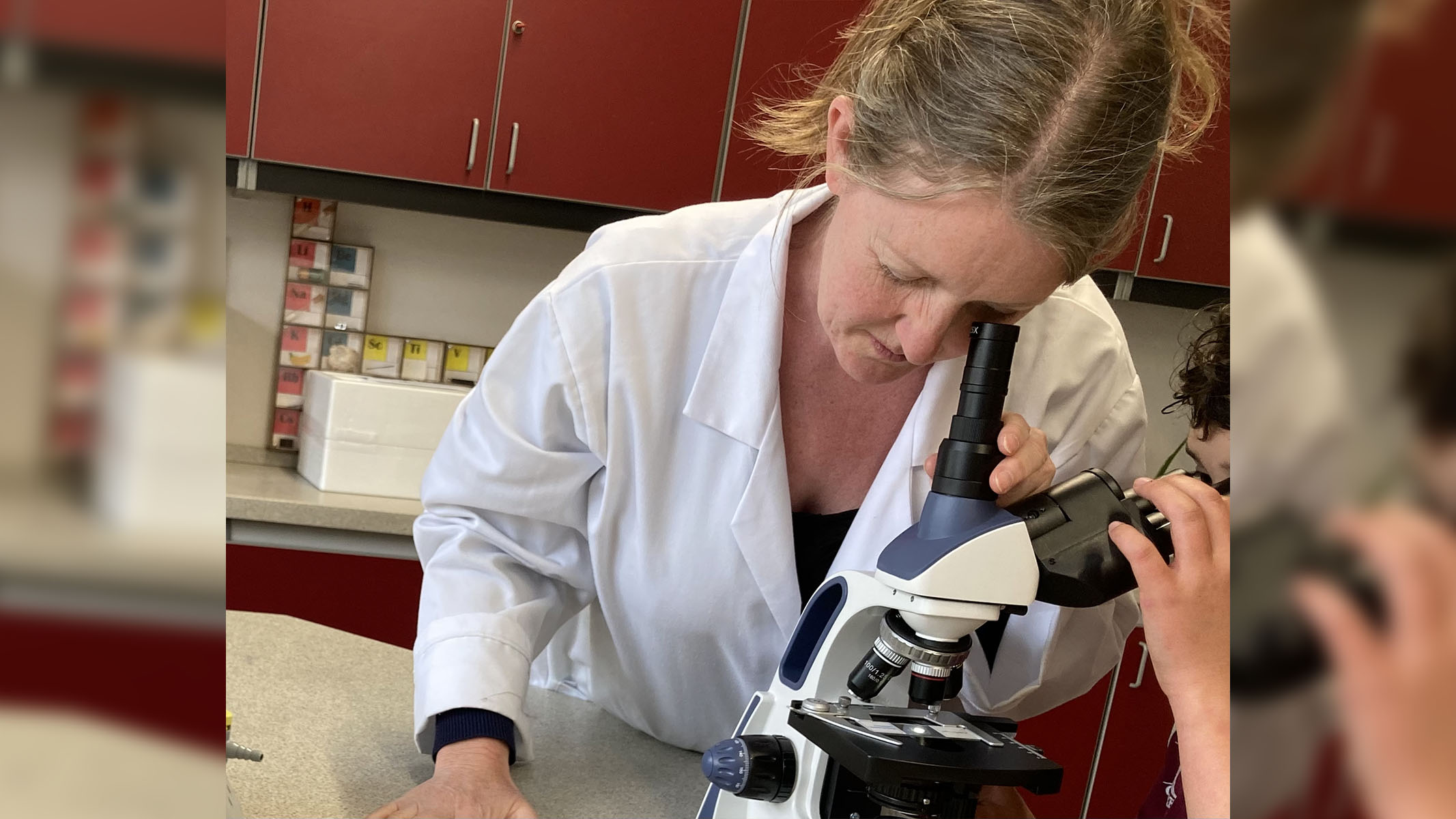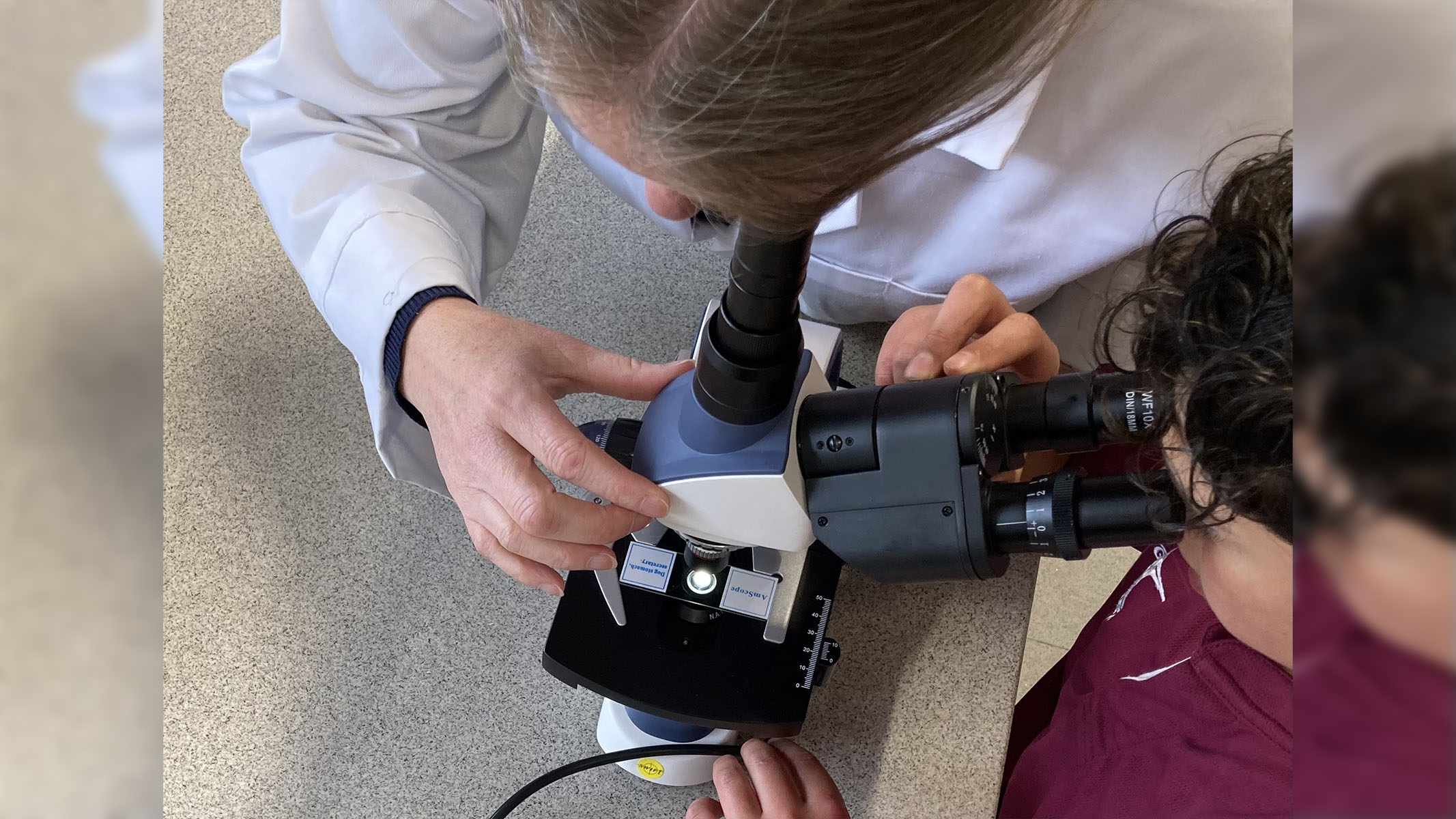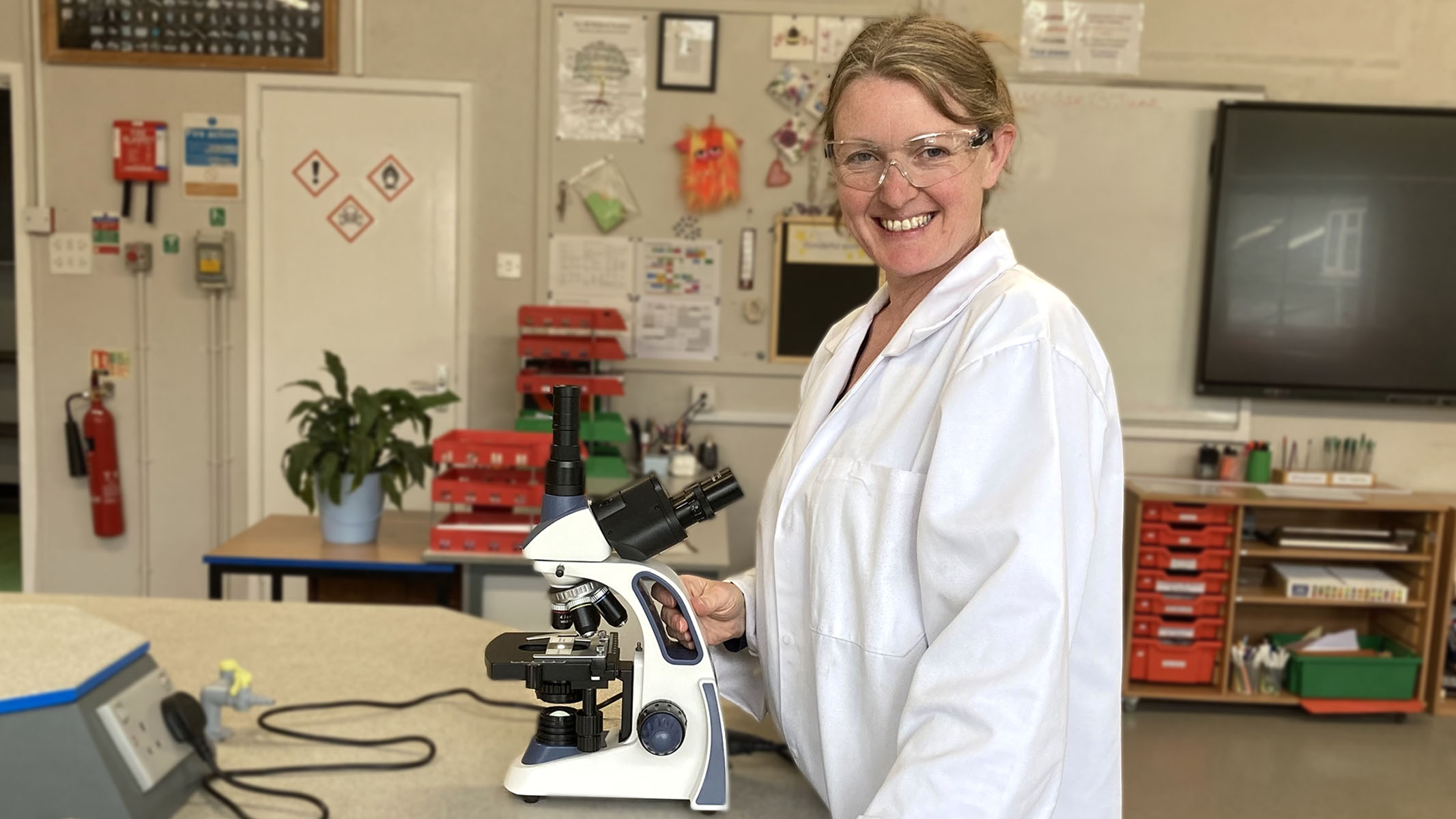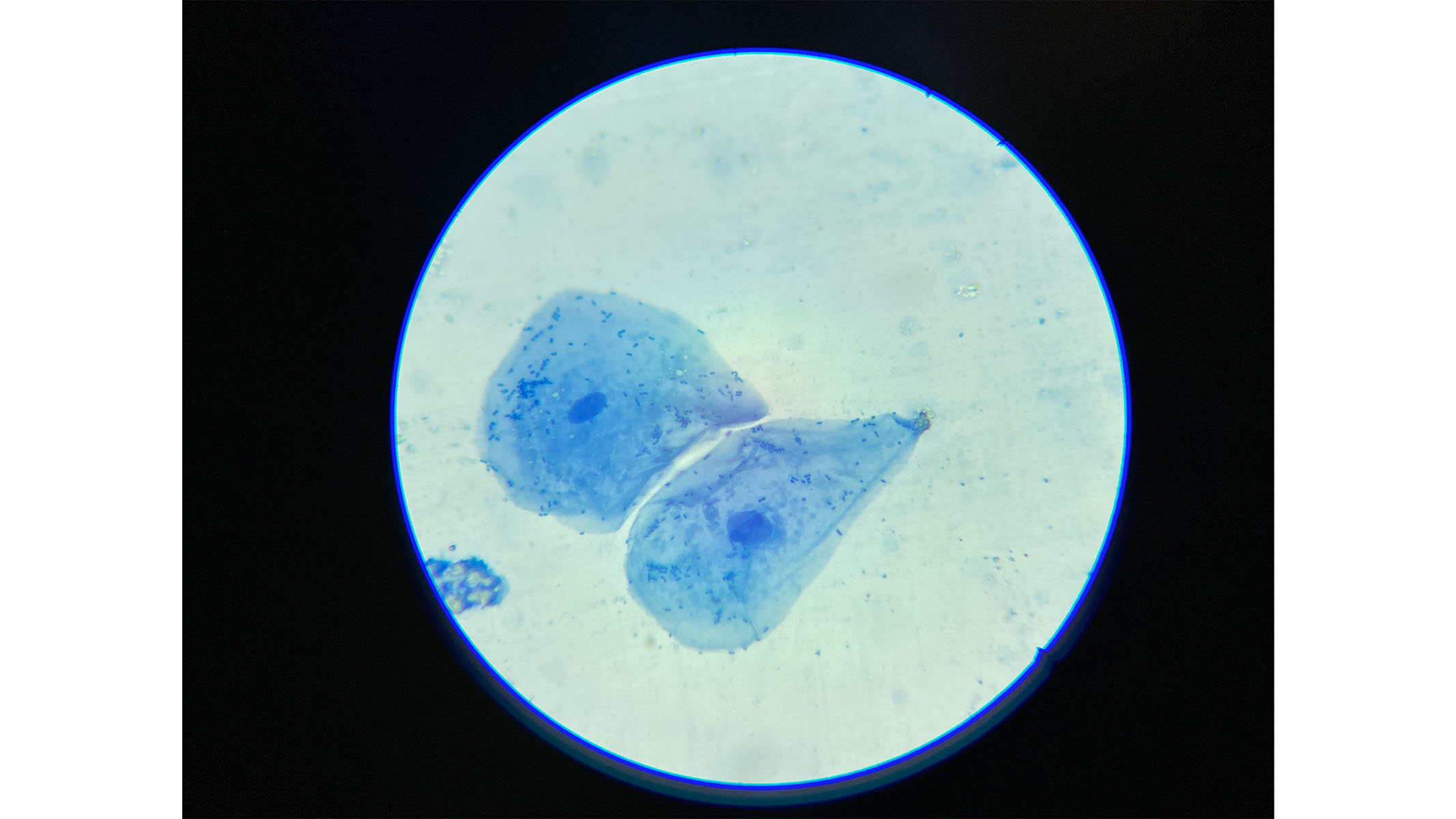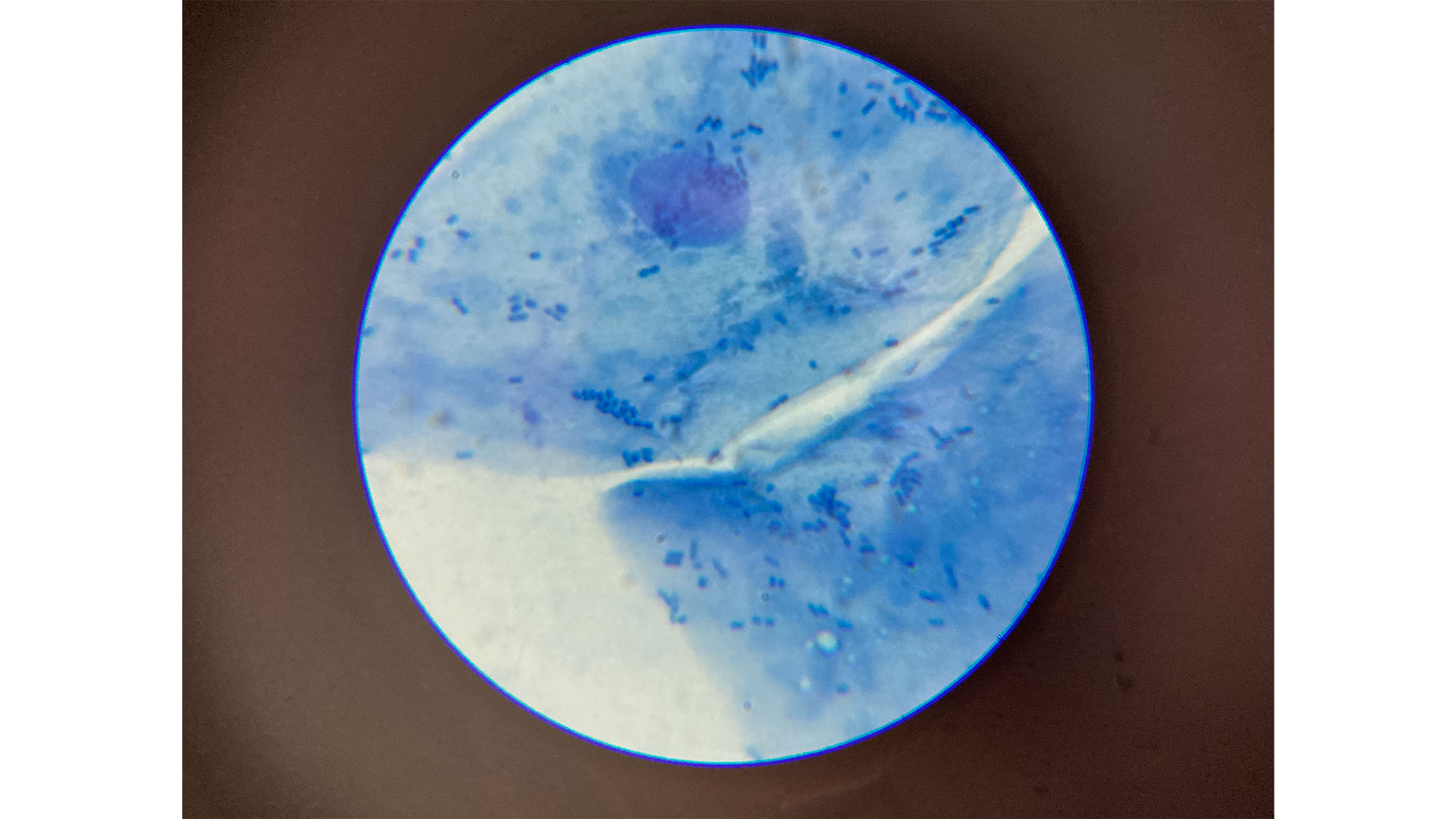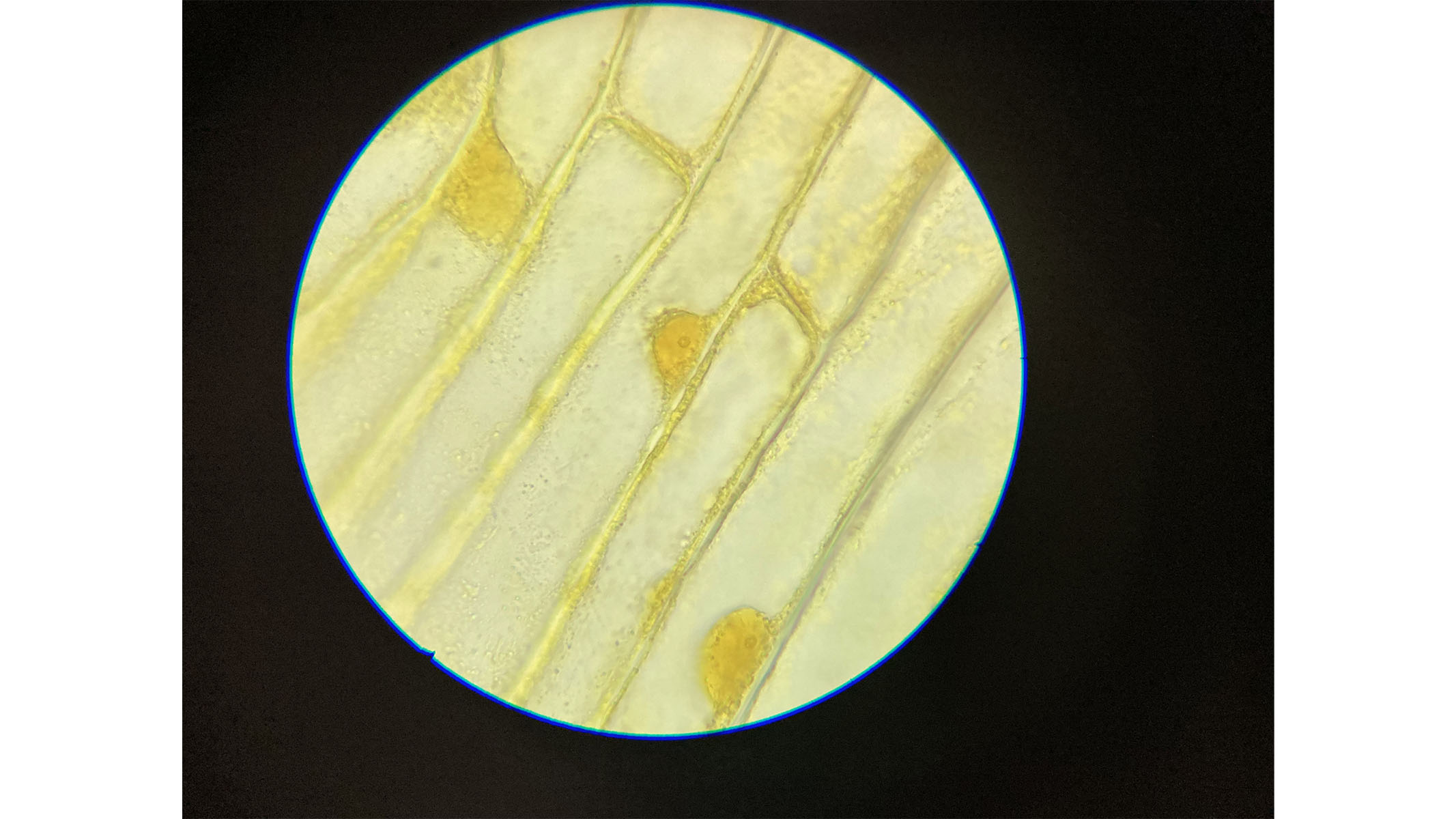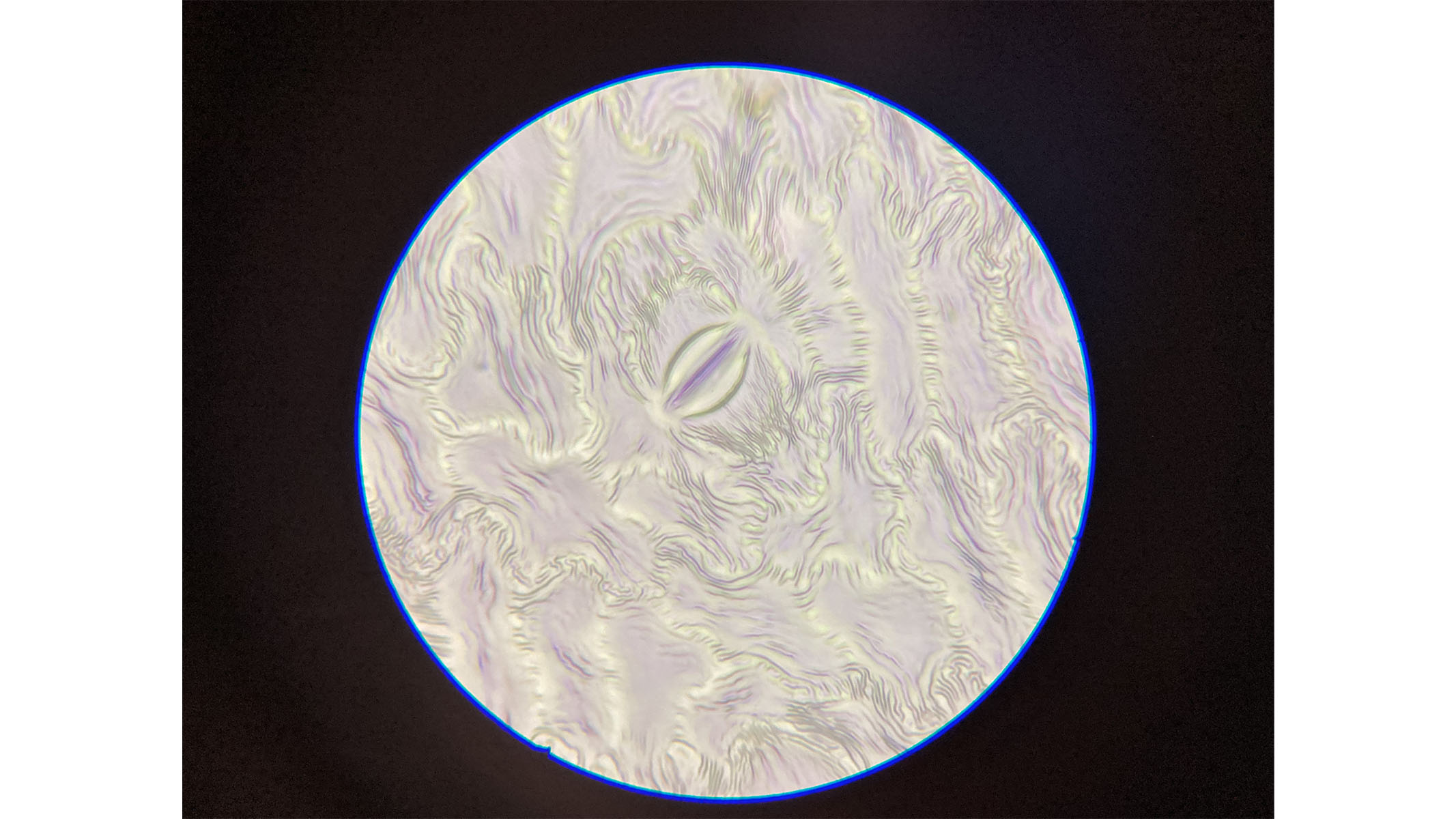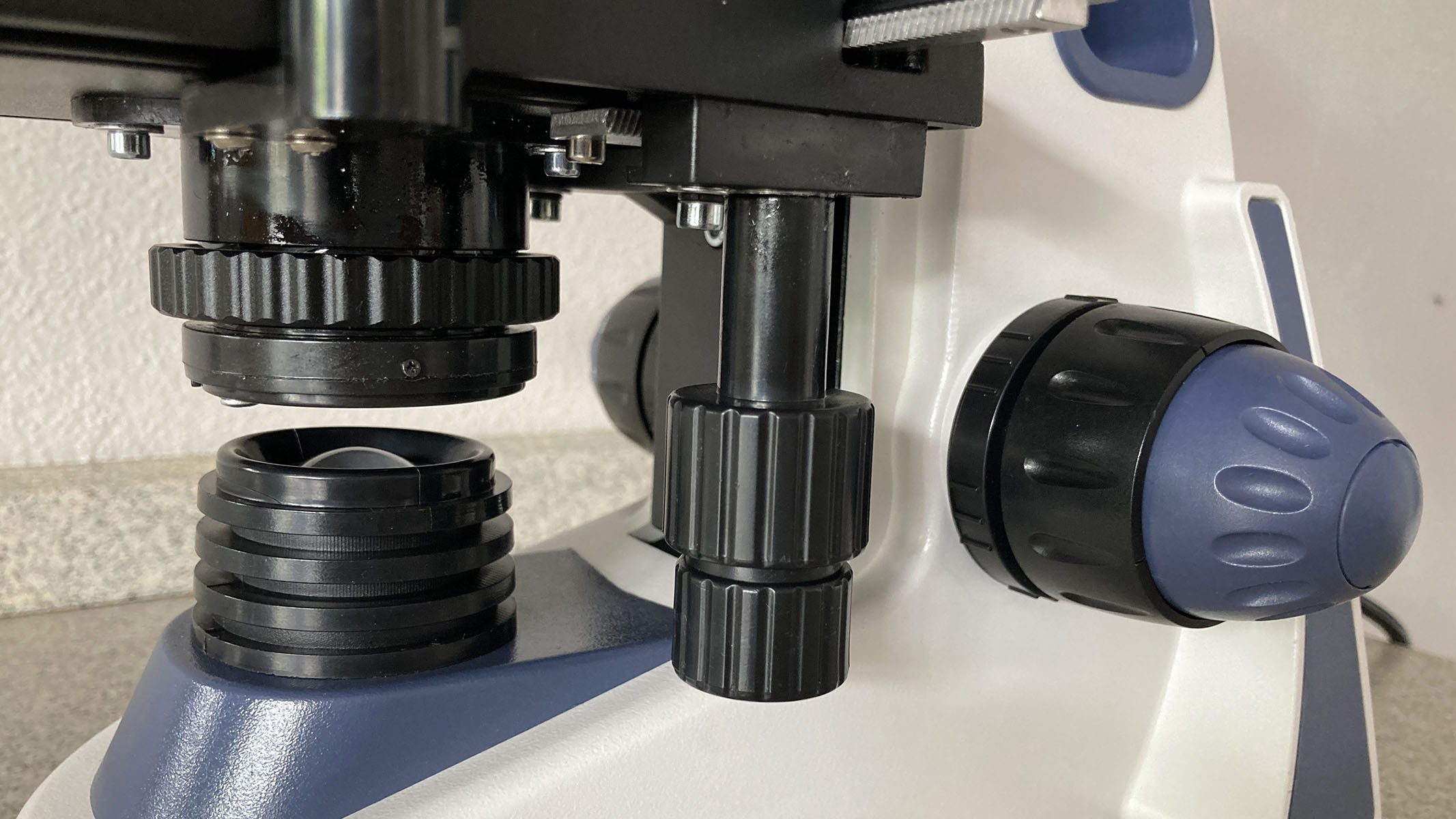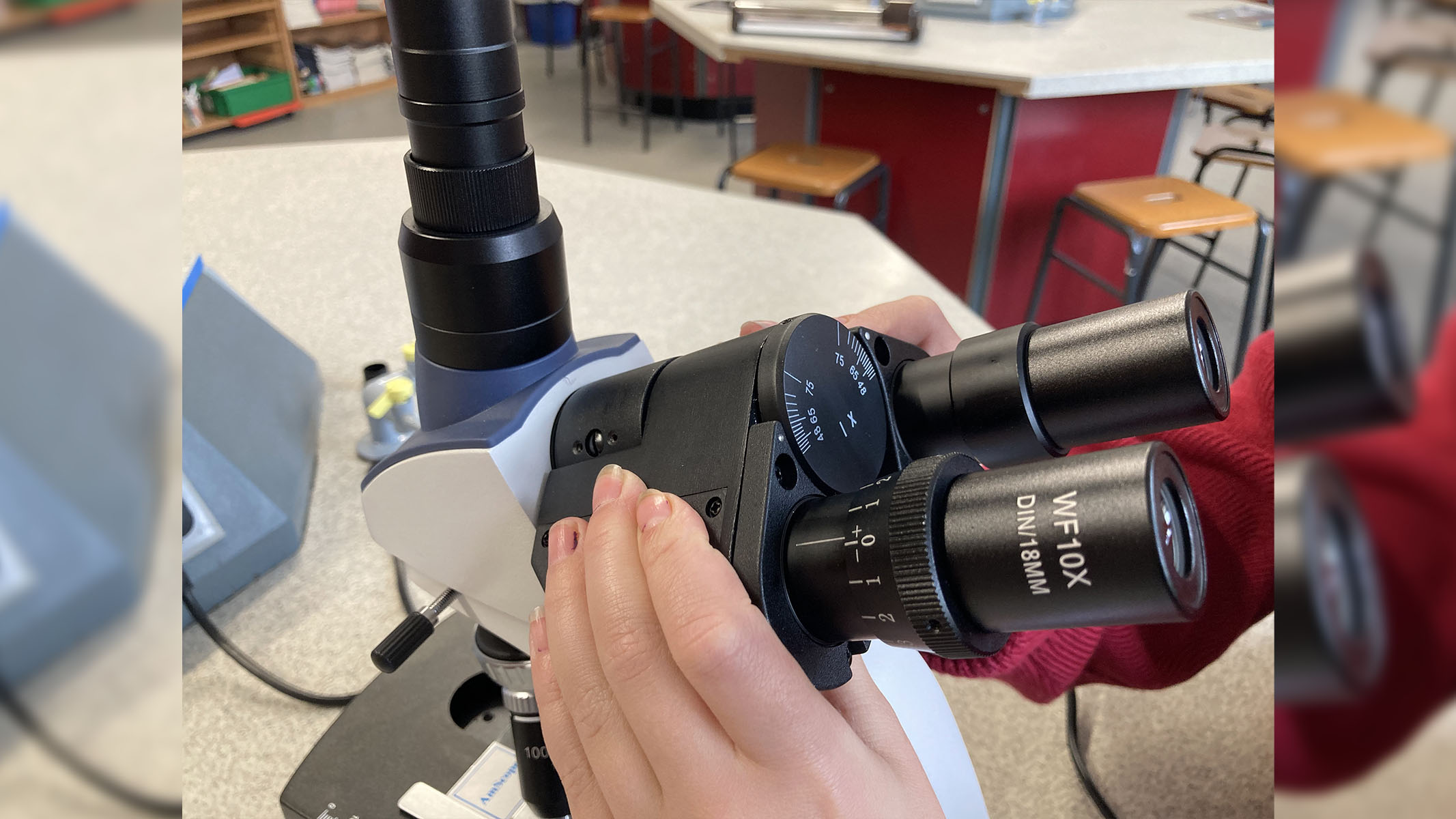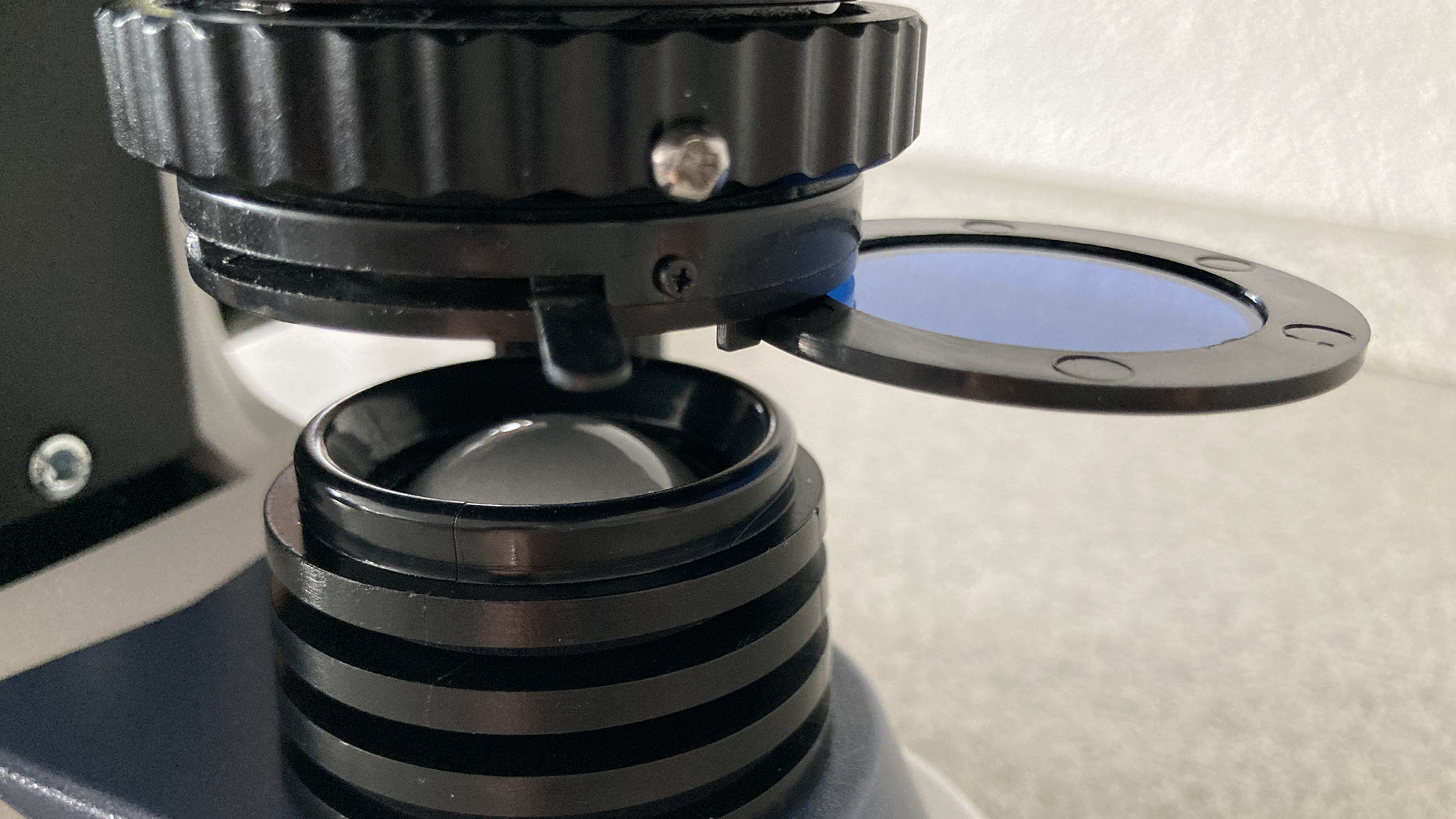It was a joy to be able to review the SWIFT SW380T 40X-2500X trinocular microscope. We found the design was robust and attractive but also being ergonomic and simple to use. It was comfortable throughout use due to the adjustable binocular eyepieces, 30-degree inclination and controllable brightness. A wide range of organisms and subcellular organelles could be viewed with clarity thanks to quality optics and a large 40-2500X magnification range. Specimens were also easy to locate and view because of the mechanical stage and ultra-fine focusing capabilities.
Whilst students enjoyed the opportunity for collaboration with the trinocular eyepiece, teachers loved the advanced features and higher-end feel of this very reasonably priced compound microscope. If you are looking to invest long-term in this microscope we think you should be aware of the Swiftcam add-on. This will enable subjects to be photographed, videoed and digitally shared, and/or used on personal devices and smartboards, for a more technically immersive learning experience.
SWIFT SW380T 40X-2500X trinocular compound microscope review
SWIFT SW380T: Design
- Design: ★★★★
- Ergonomic layout
- Sturdy build
- Smooth mechanisms
As well as being an attractive and professional-looking microscope, the Swift SW380T is ergonomic and it is clear that the user’s comfort and safety have been considered. When the microscope was positioned on the working desks the 30-degree binocular inclination meant students could remain on stools or benches without any reports of neck aches. The binocular eyepieces were smooth and easy to adjust, even for the smaller students in the group. It features an LED control to manipulate brightness, and therefore prevent dazzling as students could start dim and brighten to suit. Both of these functions help reduce eye strain which could otherwise lead to neck- and headaches.
Unfortunately, the body handle, which is needed for the microscope to be carried with two hands, is quite wide and some of the younger students’ hands were too small to carry it with ease. In a school setting, we would advise adults and technicians to move the microscope if a permanent position is not possible.
Designed to be sturdy, the triangular base kept the microscope stably planted on the tabletop, even when being eagerly manipulated by a group of enthusiastic students. Furthermore, all the knobs and moving parts glided into place while remaining firm and secure, which meant even the most beginner-users felt confident using the microscope.
Swift SW380T Specifications
Head: Trinocular with adjustable binocular eyepieces
Eyepieces: Wide-field 10X and 25X
Objectives: 4X, 10X, 40X, 100X
Stage: Mechanical with 70mm x 30mm X-Y range
Light source: Adjustable LED
Condenser: Abbe 1.25
Focusing: Coarse and ultra-fine
Extras: Filter, oil and cover
Add-ons: Eyepiece with camera attachment
Most of the microscope’s controls felt reassuringly solid. The quadruple-rotating nosepiece smoothly turned between the objectives and clicked into position securely. The eyepieces fit snugly but could be replaced quickly and the slide holder secured slides firmly with a single side clasp. We discovered the only tricky component to use was when attaching the trinocular eyepiece. The thread was delicate and the metal-on-metal screwing action felt awkward, like it could easily misalign, although this improved with regular usage. The microscope coating was easy to clean and came with a lightweight cover to help keep it free from dust.
Other pleasing design features included having coaxial ‘coarse’ and ‘ultra-fine’ focusing knobs rotating around the same axis; another component that helped the Swift SW380T obtain its ‘easy to use’ status. Interestingly, although this makes for simple operation, this pair of knobs rotate separately because they are decoupled, so precision is not compromised and remains high. Similarly, the X-Y movement on the mechanical stage is operated fluidly with minimal friction by the two adjustment controls. The action is smooth and systematic, allowing the specimen to be navigated thoroughly whilst reducing the likelihood of any motion nausea, compared with cheaper models that require the slide to be moved by hand. Furthermore, the filter holder operates with a swing out-/swing in-system, enabling viewing to switch from filter to no filter without having to remove it.
Overall, the Swift SW380T gets a double thumbs up for its design, which is both beautiful and functional.
Swift SW380T: Performance
- Performance: ★★★★
- Robust whilst observing
- Easy to use, even for younger students
- Large magnification range — 40X-2500X
As previously mentioned, the Swift SW380T is a sturdy microscope; it stands up to the manipulations of children who are beginners in microscopy and don’t yet have the dexterity or sympathy you would expect from a university student or clinician. Students also found the basic functions of the machine easy to fathom and simple to operate. We would happily let students from 11 years of age upwards use this microscope in a classroom to view their own slides provided guidance is provided.
We also see huge potential in using this model as a demonstration tool to project images, live stream videos and photograph specimens. During a science clinic, one 12-year-old student reported that he had the Swift SW380T at home, with the Swiftcam attachment. He said that it was simple to operate and that he enjoys recreating the slides he has prepared at school and projects them onto his television to show his family what he has learned.
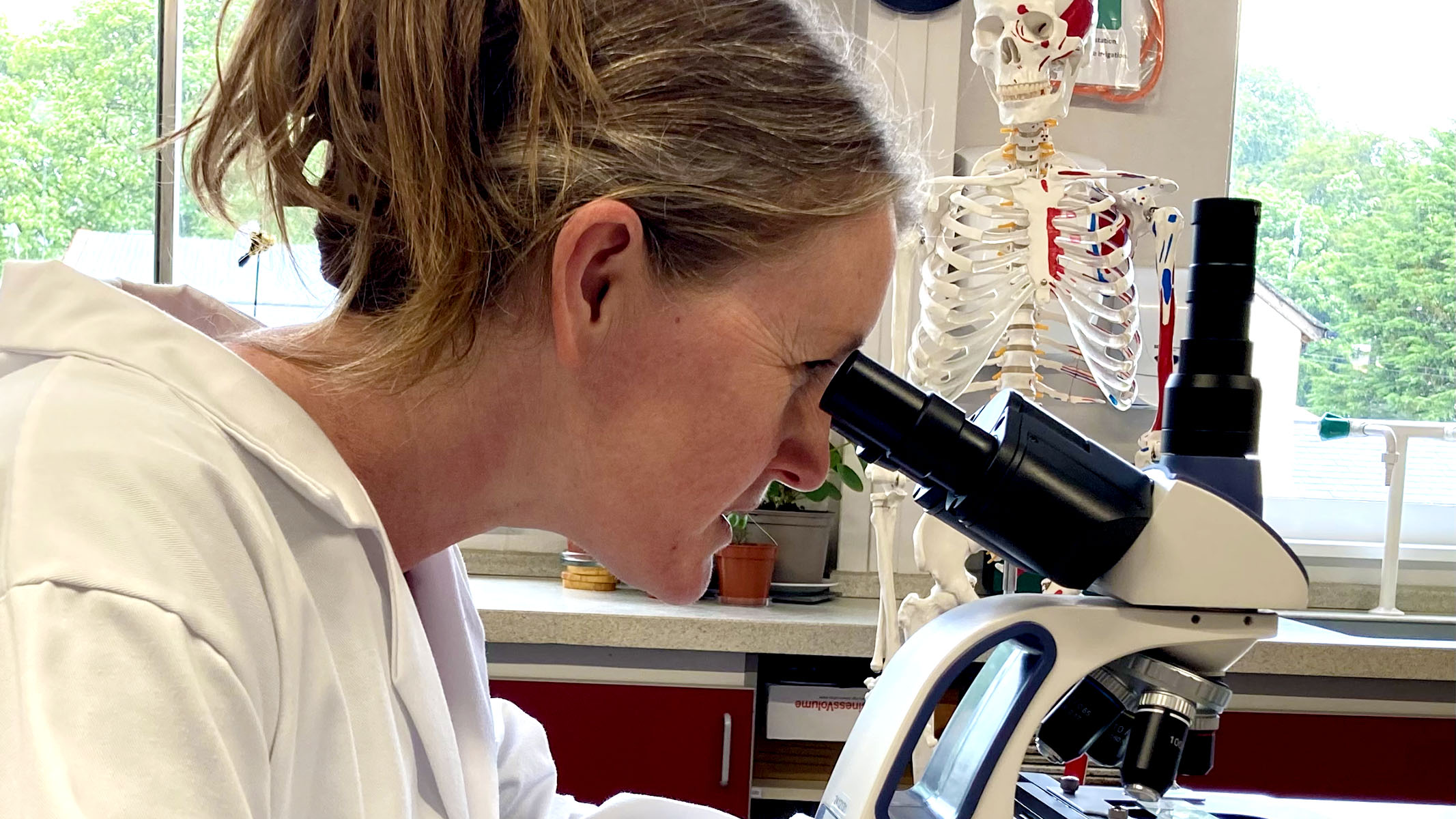
The true performance test, undoubtedly, has to be the quality of the images produced by the Swift SW380T. Having 2 pairs of eyepiece lenses and 4 objective lenses, this microscope allows magnifications of between 40X and 2500X. This large range allows for a huge variety of specimens from organisms to organelles. Greater sharpness and a wider field of view were obtained at low power 40X and 100X making it ideal for viewing larger specimens like whole insects, body tissues or the cross-section of plant stems. Medium power enabled us to hone in on individual cells with more detail. At 1000X and above it was possible to make comparisons between the textures of the cytoplasm and cell wall and determine subcellular structures such as the nucleolus, cytoplasmic organelles such as mitochondria and cell surface bacteria.
We found that the ability to regulate the amount of light from the LED through the condenser and diaphragm was essential in obtaining optimum illumination, especially necessary when using the 100X objective lens. Unfortunately, loss of light through the trinocular phototube, which appeared negligible with the lower-powered objectives, became detectable and we found ourselves wanting slightly more light, especially when using the filter.
Another noticeable limitation is that the depth of view was inconsistent across the field of view. The image becomes distorted around the circumference at magnifications above 400X. Outer details were brought into focus easily using ultra-fine focusing adjustments, but clarity was then consequently lost in the center. Thus, it was possible to view the whole subject in fine detail throughout the image circle, but not at the same time.
Swift SW380T: Functionality
- Functionality: ★★★★½
- Trinocular 360-degree rotating head for shared viewing
- Mechanical stage enables effective slide navigation
- Well-thought-out juxtaposition of mechanisms
By far, the biggest benefit for teaching and learning was the Swift SW380T’s trinocular rotating head. This meant the teacher was able to observe students’ specimens during microscopy tasks to ensure they were looking at the right part. It was also helpful for the teacher to find a cell or organism of interest and be able to discuss the features whilst looking simultaneously.
Sadly, none of the lenses had a built-in pointer so orientating the tutee to a specific part of the slide or cell was more difficult as it had to be done verbally. However, we recognize that if we had an optical camera, we could project the image onto a smartboard via the trinocular. We are excited about the possibilities this has to push our microscopy teaching to the next level; something we are hoping to do in the near future. In the meantime, we successfully managed to capture some basic images, via the trinocular phototube, on an iPhone SE 2020, through one of the binocular eyepieces.
Being able to swivel the headpiece towards other students was useful and we didn’t experience a noticeable loss of focus after rotation at lower magnifications. One limitation of the trinocular is that there are only pairs of lenses so the trinocular viewer will be seeing the image at a different magnification.
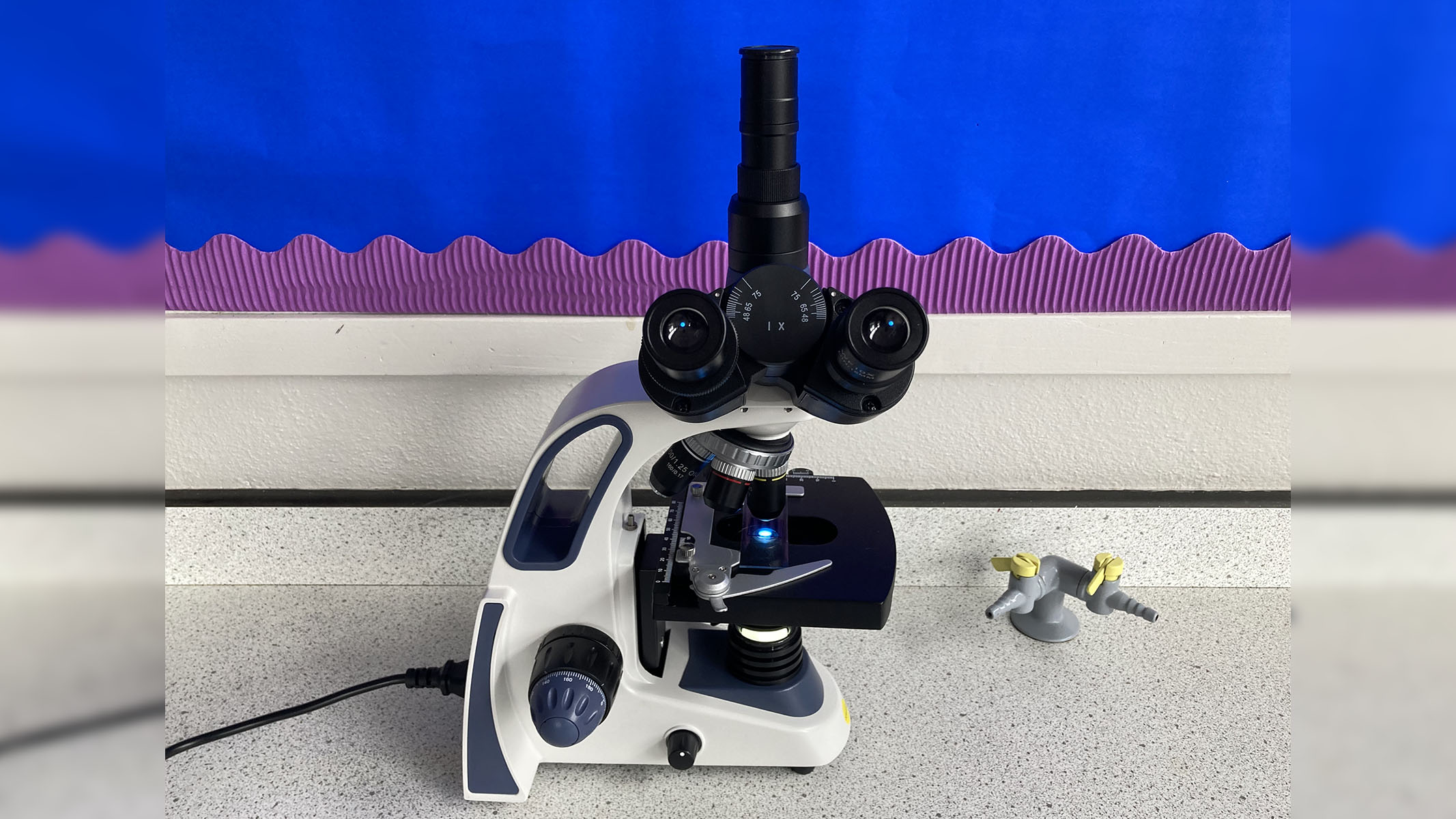
A feature that elevated our microscopy experience to a more professional level was the mechanical stage. Operated by two adjustment controls, X and Y movement in the horizontal plane was achieved systematically, with ease, over a large area. This allows viewing of specimens much larger than a cover slip; leaf peels, for example. For this purpose, we also liked the stage’s slide clip which secured the slide with a pleasing spring action but did not cover the slide, thus, preventing unnecessary obscuring or shadowing.
We enjoyed navigating a root tip squash, (squashing the tip of a root between the slide and cover slip) to find cells in the various stages of mitosis. The dual stage control soon became second nature. We alternated between the two spontaneously. Hence, irregular but purposeful movements occurred instinctively.
Should you buy the Swift SW380T microscope?
Buy it if:
You want affordable quality: Higher magnification and advanced features are useful in a high school, university or professional environment at an affordable price.
You would like a fuller teaching experience: Used with the optical Swiftcam camera, imagery can be photographed, projected or live-streamed.
Don’t buy it if:
You need to observe solid or whole objects: This microscope does not have a built-in top light.
You want to use a microscope in the field: It is heavy and needs a power source.
Overall, it was the highly considered juxtaposition of all the Swift SW380T’s operating mechanisms and how beautifully smooth they all moved that made this compound microscope such a pleasure to use. We could shift to a new objective, open the diaphragm and swing in the filter in almost a single move. We then operated the LED brightness, X-Y stage manipulation and ultra-fine focusing autonomously, without moving our eyes away from the binoculars.
In summary, we found that this microscope has numerous high-end features to enable clinical, professional compound microscopy. We have confidence that its robust construction can withstand the enthusiasm of excited students and have found the trinocular facility to be an invaluable teaching tool to students of all ages at a surprisingly reasonable price. Ergo, we highly recommend the Swift SW380T compound microscope for use in schools, laboratories or at home.
We’d recommend using the camera add-on for this microscope. The SWIFT SC1003-CK Optical Swiftcam is a 10 Megapixel camera and comes with a reducing lens, calibration kit, eyepiece adapters and a USB 3.0 Cable. It is compatible with Windows/Mac/Linux operating systems and we think this would be a valuable addition for any teacher or student learning microscopy, should your budget allow.
If this product isn’t for you
If you would like the same optic quality and sleek yet robust body with smooth actions, but don’t need the trinocular function, choose the Swift SW380B binocular version instead. You’ll be saving on average over $100 by switching to this version with roughly the same performance.
A stereo microscope, such as the Swift S41, is ideal for viewing magnified solid objects and has flexible LED lamps for lighting dissection subjects.

